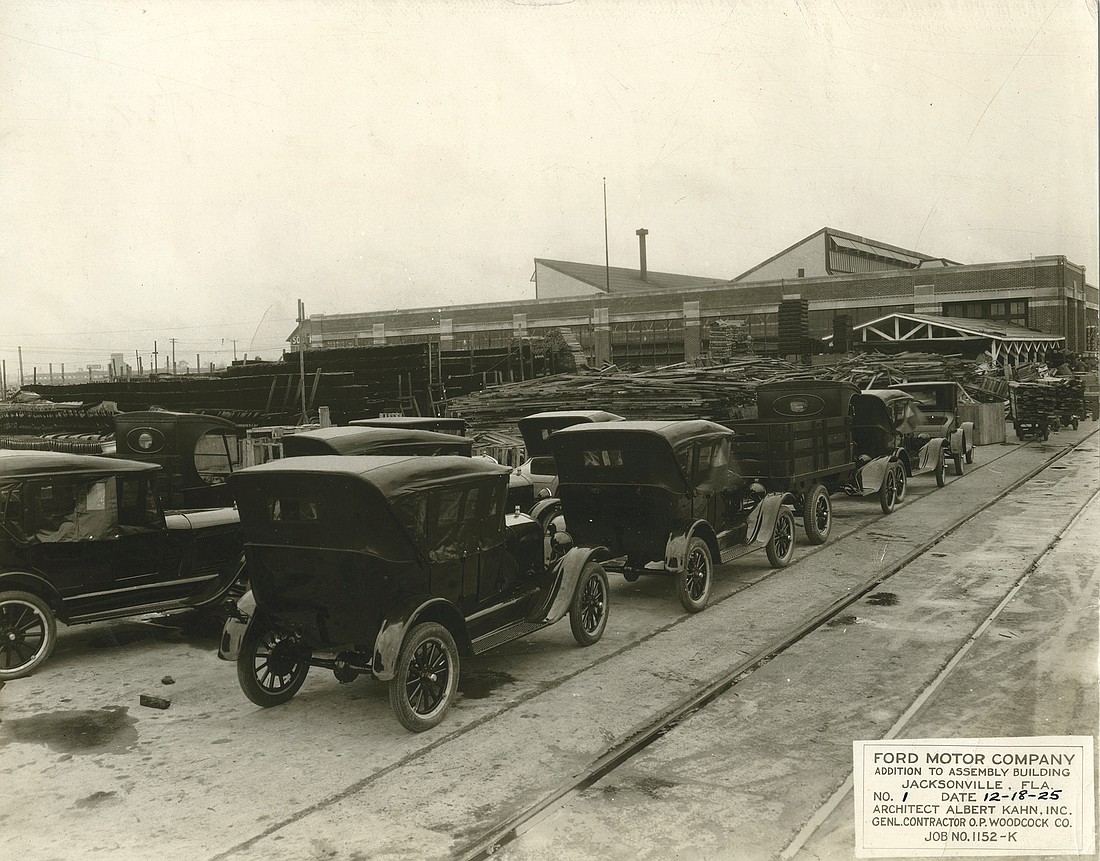
As ownership of the historic Ford assembly plant in Talleyrand starts pursuit of a demolition permit, the Jacksonville Historical Society intends to showcase the factory in its formative stage.
The Jacksonville Historical Society has acquired the original 1924 and 1925 construction drawings and progress photos taken during the Ford plant’s development.
“All were provided to us at cost by the plant’s Detroit-based architect, Alfred Kahn and Associates, which remains in business and maintains an amazing company archive,” said society CEO Alan Bliss.
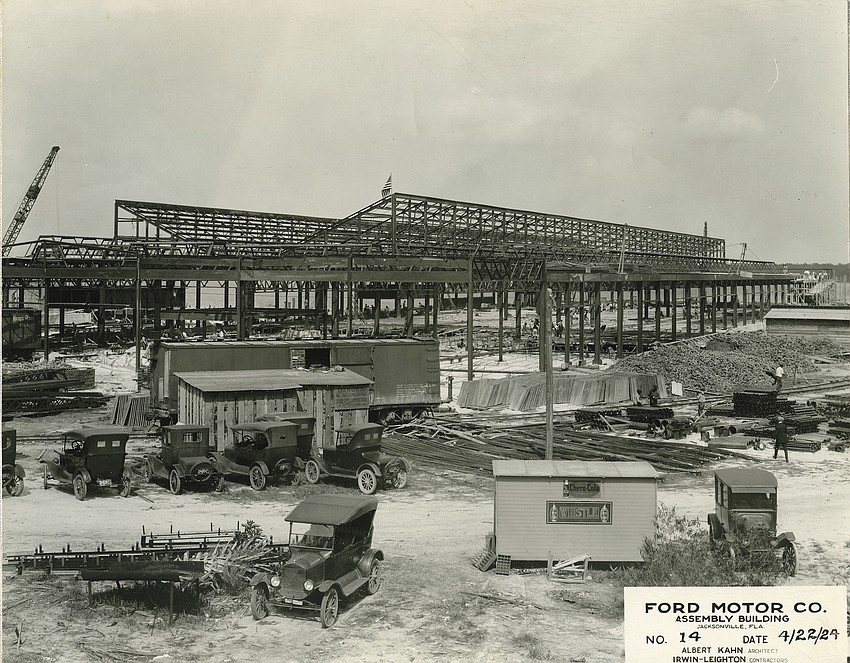
Duval County property records list the plant as a 172,000-square-foot structure built in 1925, although some reports say it opened in 1924.
Bliss said the society plans a program devoted to Jacksonville Ford’s assembly plant in May to raise awareness of National Historic Preservation Month, as well as raise funds for the society.
“We plan a special program devoted to Jacksonville’s Ford Assembly plant, at which selected historic and contemporary images from those two collections will be displayed, along with others from local private collections,” Bliss said.
He said that at the invitation of Jacksonville car “impresario” Bill Warner, Robert Casey, the former curator of the Henry Ford Museum in Dearborn, Michigan, might visit to make a presentation on founder Henry Ford’s network of regional assembly plants such as Jacksonville’s.
Warner founded the Amelia Island Concours d’Elegance, which debuted in 1996. It now is The Amelia and hosted by Hagerty, which took over in 2021.
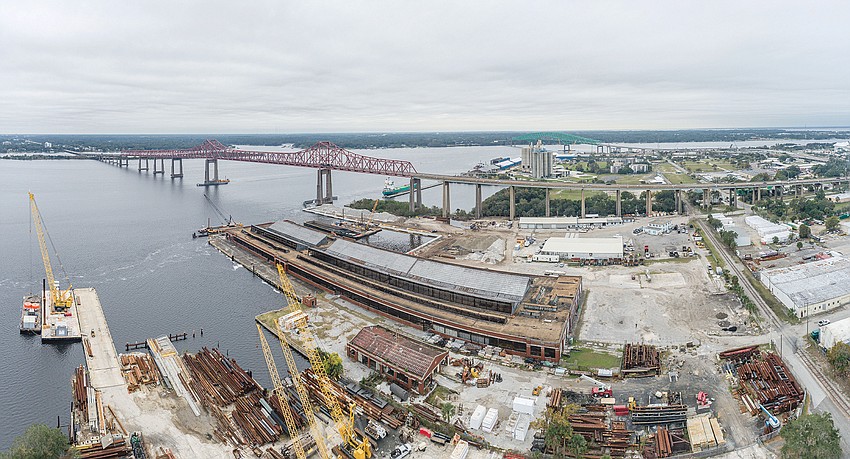
Hagerty is a specialty insurance provider focused on the global automotive enthusiast market.
The concours features hundreds of significant classic, historically relevant vehicles.
Bliss said rare and collectible vintage Fords, as well as the company’s newest automobiles, will be on display in May.
“The 107-year-old Duval Motor Co. has graciously agreed to host the event at their Ford showroom on Cassat Avenue,” Bliss said.
The target date is May 21.
The event, which Bliss said will include food and beverages, will include the society’s announcement of its 2023 list of Jacksonville’s most endangered buildings.
Preserving images
The Jacksonville City Council voted Oct. 11 to allow Ford plant property owner Amkin Hill Street LLC to demolish the landmark for a possible maritime industrial redevelopment project.
The 17-0 vote overruled a June 9 order by the Jacksonville Historic Preservation Commission that denied Amkin Hill Street LLC a certificate of appropriateness to raze the structure, which was an assembly plant for the Model T and Model A cars that city historic preservation staff said automaker Henry Ford helped plan and operate.
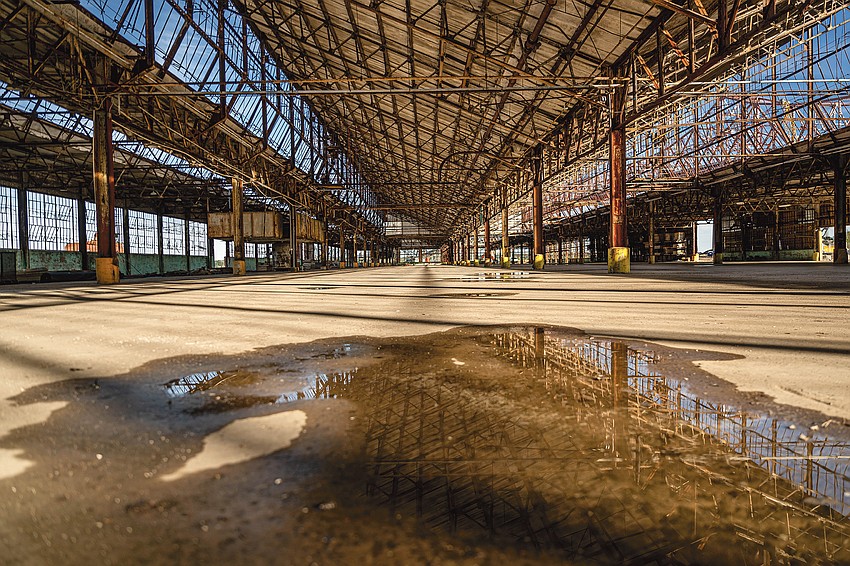
Council approved an amendment Oct. 11 by member Danny Becton requiring Amkin to perform photographic and video documentation of the plant before it is demolished.
The historical society helped with that project.
Bliss said the photographic documentation, performed by Mark Krancer and Ennis Davis, is complete.
Bliss said the documentation would be archived physically and online with the society and the city’s Division of Historic Preservation Planning.
Reasons for demolition
In March, Amkin Hill Street LLC started down the road to ask the city for a permit to demolish the factory.
The at least 98-year-old plant is at 1900 Wambolt St., near JaxPort’s Talleyrand terminal.
The building is on St. Johns River frontage under the Mathews Bridge.
The city Building Inspection Division filing concerning the demolition is termed temporary, meaning it is a placeholder until a permit application is made.
Amkin, controlled by Miami-based investor Ramon Llorens, bought the property in February 2015.
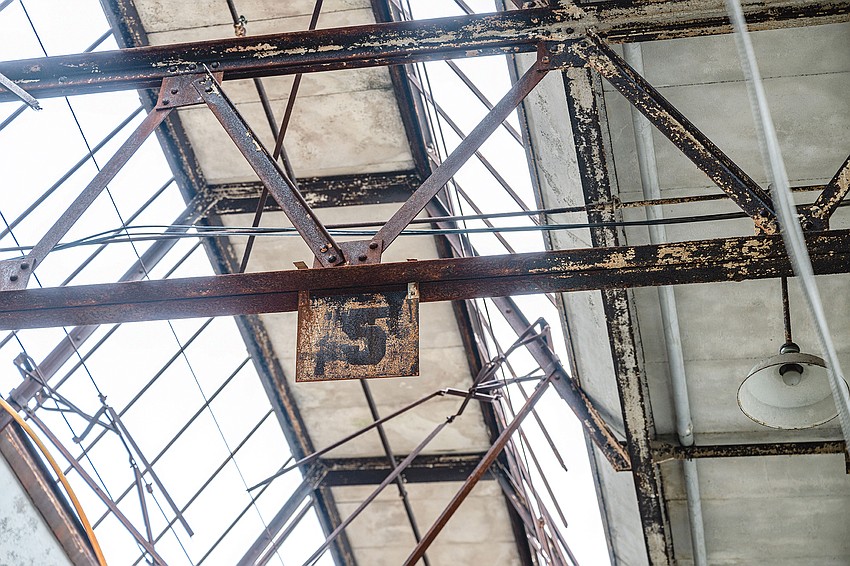
An Amkin representative told the Council Land Use and Zoning Committee on Oct. 4 that a U.S.-based shipyard owner was considering bringing 300 jobs to the site.
“We’re in confidential negotiations with a large shipyard owner that has three existing military shipyards in the United States to come into the facility,” Sonny Redmond, a consultant for Amkin, told the LUZ committee.
“We’re making improvements to get ready for his activities if we can finalize a lease. They’re going to bring 300 new, high-paying jobs to the community that we’re in,” he said.
“If it could have been renovated, we’d have done it,” Redmond said. “It’s impossible.”
Another Amkin representative told city officials that pilings at the plant are structurally unsound and that its contracted engineer deemed the building not salvageable.
Historic Preservation staff and commission members said in the denial that the professional engineering evaluation of the building by Morales Consulting Engineers that Amkin submitted in its application lacked a detailed analysis to prove the building was at risk of collapse.
Although several Council members acknowledged the historic significance of the building, they said the decision to grant Amkin’s appeal came down to the structural condition and the possibility of more jobs in the Eastside neighborhood.
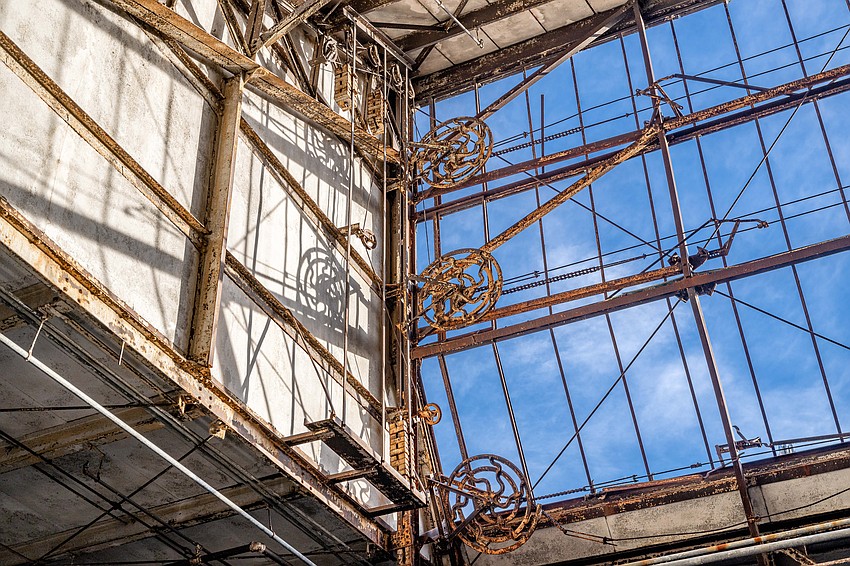
The 14.64-acre Ford plant site is next to the north side of the property where Fincantieri Marine Repair is making a $30 million improvement to marine infrastructure, including work to accommodate a 500-foot dry dock.
Redmond said the potential Amkin tenant wants to lift ships out of the water for repairs.
A local landmark
According to city Assistant General Counsel Susan Grandin and former Planning and Development Department staff Susan Kelly, who prepared the commission’s report about the property, the plant has had local landmark status since Nov. 23, 2003.
The ownership group at the time requested the landmark designation, which is meant to give the building some protection from demolition.
Kelly, who now works for the Downtown Investment Authority, said the Ford plant was designed by prominent industrial architect Albert Kahn and Henry Ford was directly involved in the project.
Morales’ report said that damage to the timber pile-supported wharf around the building included portions with up to 100% section loss and loss of fill material under the building itself.
Bliss and the city Planning and Development staff agreed the eastern third of the building was likely deteriorated beyond repair but said some of the factory, former showroom and office areas could likely be preserved.